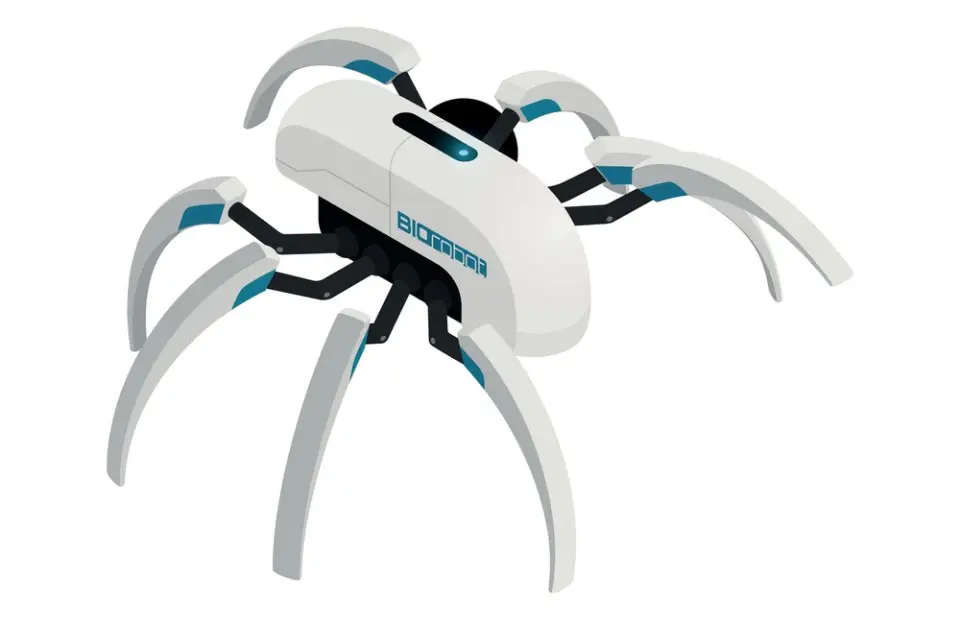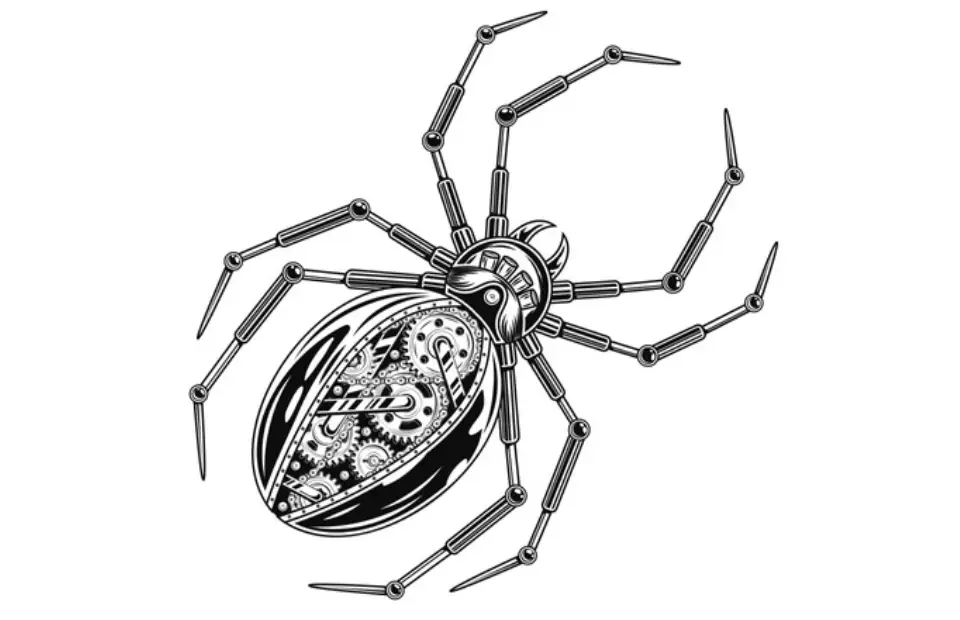Robot Spider is a robot that resembles a real spider and has fine movements, programmability, and customizability. It has 26 servo motors and is powered by the Bigfoot™ Robotics Engine. Crawl with Eight legs! The world of robotics has taken a fascinating turn with the invention of the robot spider. It’s a unique and versatile class of robots inspired by the arachnids found in nature. These amazing machines are designed to mimic the agility and adaptability of spiders, pushing the boundaries of what’s possible in the world of technology.
From their simple beginnings as experimental prototypes to their current state-of-the-art iterations, robot spiders have had a remarkable evolution.
Robot spiders have proven to be more than expected. We will see all the amazing applications and use cases that showcase the versatility of robot spiders, from search and rescue operations to exploration in hazardous environments.
Evolution of Robot Spider

Inspiration from Nature
The idea of robot spiders is taken from the remarkable abilities of real spiders. Their agility, versatility, and ability motivated engineers to replicate these characteristics in robotics.
Early Developments
Early attempts to create robot spiders are not good at all. There are many complex challenges and hurdles like balancing and movement. Initial designs were simple and had a lot of limitations.
Advancements in Materials and Mechanisms
Advanced materials science and mechanical engineering have played a pivotal role in enhancing the capabilities of robot spiders. The adoption of lightweight durable materials is significant. The integration of sophisticated mechanisms for movement and manipulation is the core of robot spiders.
Design Principles

Biomechanics and Kinematics
Engineers use biomechanics and kinematics principles in robot spider design. These principles are very important in achieving life-like movement.
Sensors and Perception
Advanced sensory systems integrated into robot spiders. It includes vision, touch, and environmental sensors. These sensors enhance a machine’s ability to navigate and interact with its surroundings.
Energy Efficiency
The energy efficiency of robot spiders is increased with the help of lightweight designs, energy-efficient actuators, and power management systems.
Types of Robot Spider

1. Hexapods vs. Quadrupeds
Robot spiders come in various forms, each made for specific needs. The main difference between them is that Hexapod walking can be statically stable (easy for a new roboticist) quadrupeds are much harder to make.
2. Size Variations and Scaling
The size of robot spiders varies significantly, from miniature versions designed for complex tasks to larger models suited for heavy-duty applications.
3. Specialized Features in Different Models
Different robot spiders are created with specialized features to meet specific challenges. There are several models of robot spiders each can explore a certain environment and do specific tasks.
Applications of Robot Spiders

Search and Rescue Operations
Robot spiders are being developed for search and rescue missions, navigating through complex environments that traditional robots may struggle to reach.
Environmental Monitoring
Robot spiders are used in environmental monitoring, particularly in areas that are challenging for humans to access. Robot spider has various applications in ecological research and conservation efforts.
Industrial Inspections
Highlight the use of robot spiders in industrial settings for inspections of complex structures, pipelines, and confined spaces. Discuss how their agility and small size make them ideal for such tasks.
Challenges and Limitations

Technical Challenges
There are a lot of technical challenges faced in the development of robot spiders, including issues related to control algorithms, sensor integration, and the need for more advanced artificial intelligence.
Ethical Considerations
Ethical considerations surrounding the use of robot spiders are essential, particularly in sensitive areas such as privacy concerns and potential misuse of the technology.
Public Perception
The main challenge after making this robot is how the public perceives robot spiders and the potential psychological impact of these machines. Different strategies and testing are applied to address public concerns and build trust in this emerging technology.
Future Prospects

Advancements in Artificial Intelligence
Continuous developments in artificial intelligence will likely enhance the capabilities of robot spiders, enabling them to make more intelligent decisions and adapt to dynamic environments.
Integration with Other Technologies
The potential relationship between robot spiders and other emerging technologies, such as the Internet of Things (IoT) and edge computing, and how these integrations could open new avenues for applications.
Continued Research and Innovation
The importance of continued research and innovation in the field of robot spiders can not be denied. Continuous research with a focus on addressing existing challenges and pushing the boundaries of what these machines can achieve.
Conclusion
The world of robot spiders is dynamic and evolving. As technology advances, the potential applications and impact of these robots are boundless.
Robot spiders, these machines are the remarkable fusion of biology and engineering. As we look to the future, the evolution of robot spiders holds the promise of transforming industries, improving safety, and contributing to our understanding of robotics in ways we have yet to fully comprehend.
Frequently Asked Questions on Robot Spider
How do Robot Spiders differ from traditional robots?
Robot spiders differ from traditional robots in their design and functionality, mimicking the agility and adaptability of spiders in nature.
What industries benefit the most from Robot Spiders?
Robot spiders find applications in diverse industries, with significant contributions to search and rescue, exploration, surveillance, security, and healthcare.
Are there any ethical concerns surrounding the use of Robot Spiders?
Ethical concerns include privacy issues, potential misuse, and the societal impact of widespread adoption. Addressing these concerns is crucial for responsible development and deployment.
How do Robot Spiders navigate challenging terrains?
Robot spiders employ a variety of locomotion mechanisms, including walking, climbing, and maneuvering, allowing them to navigate challenging terrains with precision.
What role does artificial intelligence play in the functionality of Robot Spiders?
Artificial intelligence is integral to the functionality of robot spiders, enabling them to process data, make decisions, and adapt to dynamic environments.





